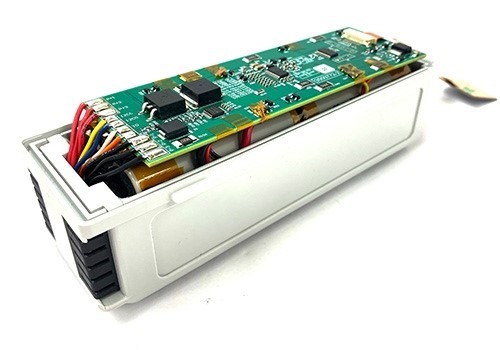Lithium-ion battery designs face challenges related to battery degradation and capacity fade over extended use cycles, impacting their long-term performance and reliability. Lithium-ion battery degradation occurs gradually over time due to various factors, including chemical reactions within the battery cells, mechanical stresses during charging and discharging, and environmental conditions such as temperature and humidity. These processes lead to the loss of active lithium ions, degradation of electrode materials, and formation of irreversible side reactions, ultimately resulting in reduced battery capacity and performance.
Mitigating Capacity Fade
To address the challenges of capacity fade in lithium ion battery design, several strategies can be employed:
-
Advanced Electrode Materials
Innovative electrode materials with improved stability and durability can help mitigate capacity fade in lithium-ion battery designs. Materials such as silicon-based anodes and high-nickel cathodes offer higher energy densities and better cycling stability, reducing the rate of capacity degradation over extended use cycles.
-
Electrolyte Optimization
Optimizing the electrolyte composition and additives can enhance the stability and cycling performance of lithium-ion battery designs. Electrolytes with improved ion conductivity and resistance to side reactions can minimize degradation mechanisms such as electrolyte decomposition and electrode-electrolyte interface instability, thereby extending battery lifespan.
-
Cell Engineering Techniques
Cell engineering techniques such as electrode surface coatings, nanostructured materials, and tailored electrode architectures can improve the mechanical integrity and electrochemical performance of lithium-ion battery designs. These techniques help mitigate mechanical stresses and enhance ion diffusion kinetics, reducing the likelihood of capacity fade and prolonging battery cycle life.
-
Battery Management Systems (BMS)
Battery management systems play a crucial role in monitoring and controlling the charging and discharging processes of lithium-ion battery designs. Advanced BMS algorithms can optimize charging profiles, balance cell voltages, and detect early signs of degradation, allowing for proactive measures to mitigate capacity fade and maintain battery health over extended use cycles.
-
Temperature Control
Temperature control mechanisms such as thermal management systems and active cooling strategies can prevent excessive heat buildup during battery operation, which accelerates degradation processes. By maintaining optimal operating temperatures, lithium-ion battery designs can minimize capacity fade and ensure long-term reliability in diverse environmental conditions.
-
State-of-Charge Management
Effective state-of-charge (SOC) management strategies can help mitigate capacity fade in lithium-ion battery designs by avoiding deep discharges and overcharging, which are known to accelerate degradation processes. By maintaining the battery within optimal SOC limits during operation, SOC management systems can prolong battery lifespan and minimize capacity loss over extended use cycles. Integrated SOC monitoring and control mechanisms provide real-time feedback to optimize charging and discharging profiles, ensuring the longevity and reliability of lithium-ion battery designs.
Wrapping Up
Addressing the challenges of battery degradation and capacity fade in lithium-ion battery designs requires a multifaceted approach encompassing advanced materials, electrolyte optimization, cell engineering techniques, battery management systems, and temperature control mechanisms. By implementing these strategies, manufacturers such as Emerging Power can develop rechargeable lithium ion battery pack with enhanced durability, longevity, and performance, meeting the demands of various industrial applications while minimizing the impact of capacity fade over extended use cycles. As technology continues to evolve, ongoing research and innovation in lithium-ion battery design will further advance the reliability and sustainability of energy storage solutions for the future.

